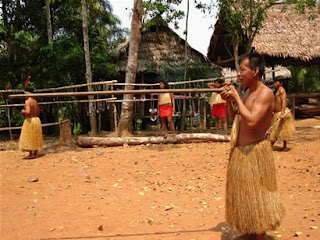Interested about Wildlife in Australia? If you are landing in Sydney, a couple of places are distinguished for this purpose. Discover furry koalas, skipping kangaroos and shy platypus in zoos and wildlife parks just minutes from the heart of Sydney city.
Don't expect to see kangaroos or reptiles when you have landed in Sydney, if you do, you must have landed somewhere else. If you have confirmed your destination (which is Sydney) then I guess you must have your eyes checked.
Many tourists still see Australia as having a land with kangaroos on the street. Most of them are found somewhere on the bush or some place where they can feel that they have the sense of habitat. The easiest way to experience fauna in Sydney is to transport to the zoos, the largest collection of the city's wildlife is at Taronga Zoo, its size and its years of serving makes it a spectacular place to discover wildlife and preservation. Taronga zoo is located north of Sydney Harbour. To get there, take a ferry from Circular Quay and the Central Business District, the trip is approximately 12 minutes. Make it scenic, transport through one of the cable cars of Sky Safari that operates from the Top Entrance to the Ferry Wharf from 9.30am to 5.00pm daily. Not finding it cool? Take the bus.
Some people wishes to discover Australian wildlife in their original habitat and state, one way of doing this is hiring a 4WD or a campervan hire Australia, depending on your intended wildlife location. Why not, if you have more than a day and would love to do other stuff like hiking, camping, etc, this is a call for adventure. Handle some safety while doing this and always as a local about animal behaviors.
Another wildlife haven in Sydney is the Sydney Wildlife World located within walking distance of the city centre. It is an ideal place to see wildlife given the limited time. Sydney Wildlife World is adjacent to Sydney Aquarium, between Cockle Bay and King St Wharf. Also consider Featherdale Wildlife Park, located in the western Sydney suburb of Doonside, about 40 minutes by road from the Sydney centre.
Don't expect to see kangaroos or reptiles when you have landed in Sydney, if you do, you must have landed somewhere else. If you have confirmed your destination (which is Sydney) then I guess you must have your eyes checked.
Many tourists still see Australia as having a land with kangaroos on the street. Most of them are found somewhere on the bush or some place where they can feel that they have the sense of habitat. The easiest way to experience fauna in Sydney is to transport to the zoos, the largest collection of the city's wildlife is at Taronga Zoo, its size and its years of serving makes it a spectacular place to discover wildlife and preservation. Taronga zoo is located north of Sydney Harbour. To get there, take a ferry from Circular Quay and the Central Business District, the trip is approximately 12 minutes. Make it scenic, transport through one of the cable cars of Sky Safari that operates from the Top Entrance to the Ferry Wharf from 9.30am to 5.00pm daily. Not finding it cool? Take the bus.
Some people wishes to discover Australian wildlife in their original habitat and state, one way of doing this is hiring a 4WD or a campervan hire Australia, depending on your intended wildlife location. Why not, if you have more than a day and would love to do other stuff like hiking, camping, etc, this is a call for adventure. Handle some safety while doing this and always as a local about animal behaviors.
Another wildlife haven in Sydney is the Sydney Wildlife World located within walking distance of the city centre. It is an ideal place to see wildlife given the limited time. Sydney Wildlife World is adjacent to Sydney Aquarium, between Cockle Bay and King St Wharf. Also consider Featherdale Wildlife Park, located in the western Sydney suburb of Doonside, about 40 minutes by road from the Sydney centre.


